IoTEX in partnership with Tenvis announced the new UCAM which is the world’s first Blockchain-powered home security camera. Let’s delve into the features of the device. If you have some basic understanding about Blockchain then go ahead. In case if you’ve hearing blockchain for the first time, no worry, we’ve explained briefly below in this article.
Wikipedia has a simple definition of
Blockchain. “A blockchain originally blocks chain, is a growing list of
records, called blocks, that are linked using cryptography”. A blockchain is a
decentralized, distributed, and most public. The invention of the blockchain
for bitcoin made it the first digital currency to solve the double-spending
problem without the need for a trusted authority or central server.
The UCAM functions very much similar to
that of any home security camera except with some added benefits which will be
discussed below. UCAM comes with most premium features such as Full-HD 1080p
video recording and playback, 360 ° coverage, night vision, motion detection
alerts, and two-way audio.
What really makes the UCAM unique from
other security cameras is the built-in privacy features. End-to-end encryption
makes the data accessible only to the users at either end. No one can access it
during transmission because of encryption. The UCAM uses the IoTeX blockchain
and decentralized identity to authorize who can view what content and for how
long. Furthermore, all the content acquired by UCAM is the exclusive property
of the user. No one will be able to access it, not even IoTeX or Tenvis.
IoTeX and Tenvis are introducing an
exciting new paradigm for privacy: their new cameras including the UCAM will be
user-centric, allowing consumers to own their data. No one else has tried this
before making it a versatile product. Interested users can visit their official
website for more information on the product and avail the best offers. However,
it is retailing at the discount price of $44.99.
Blockchain can be defined as a digital
ledger consisting of digital records called Blocks. Blocks are used to record
transactions across many computers so that any involved block cannot be altered
retroactively, without the alteration of all subsequent blocks and requires
consensus of the network majority. By design, a blockchain is resistant to
modification of the data. This allows the participants to verify and audit
transactions independently and at a much lower cost. A blockchain database is
managed autonomously using a peer-to-peer network and distributed timestamping
server.
Blocks hold batches of valid transactions
that are hashed and encoded into a Merkle tree. Each and every block includes
the cryptographic hash of the previous block in the blockchain, which links the
two. The linked blocks form a chain. This iterative process confirms the
integrity of the previous block, all the way back to the original genesis
block. It is the average time it takes for the network to generate one extra
block in the blockchain. For example, in the case of Bitcoin, it takes on an
average of 10 minutes to generate a new block.
This is an important security feature of
blockchain. By storing data across the peer-to-peer network, blockchain
eliminates risks that come with data being held centrally. The decentralized
blockchain uses ad hoc message passing and distributed networking. These
blockchain networks lack centralized points of vulnerability that computer
crackers can exploit also one thing to note is that it has no central point of
failure. Blockchain security methods include the use of public-key
cryptography. A public key is a long, string of numbers that looks random. It
is an address on the blockchain. Value tokens sent across the network are
recorded as belonging to that address. A private key is like a password that
gives its owner access to their digital assets or the means to otherwise
interact with the various capabilities that blockchains now support.





